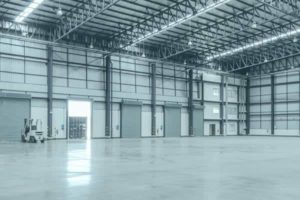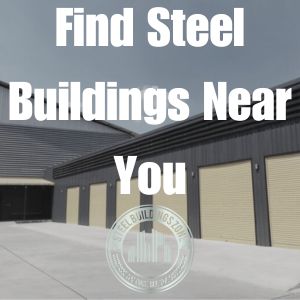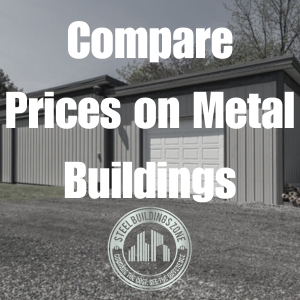
Upfront Costs and Long-term Savings of Steel Structures
The construction industry has been buzzing with the many benefits that steel structures bring to the table. As a metal renowned for its strength, malleability, and longevity, steel has gradually evolved to become the top choice for many developers. But how does its upfront cost compare to its long-term savings? Is investing in a steel structure truly cost-effective in the long run? Let’s dive in and examine.
COMPARE QUOTESUpfront Costs of Steel Structures:
Raw Material Cost
The price of steel can fluctuate based on global market dynamics, mining outputs, and trade regulations. However, the widespread production and recycling capabilities often keep prices more stable than other building materials.
Design & Planning
Steel structures have the advantage of being pre-engineered, which often simplifies the design and planning phase. Prefabricated parts, customized to a project’s requirements, can be manufactured off-site and then transported for assembly. This usually results in reduced design costs.
Labor Costs
Since steel parts can be prefabricated, on-site labor costs are often reduced. Fewer workers are needed, and the build time is typically quicker, leading to lowered labor expenses.
Foundation & Assembly
Depending on the structure’s size and purpose, the foundation requirements might differ. Steel buildings generally have lighter frames, which could result in savings on foundation costs. The bolt-together assembly of steel structures can also save time and money.
Long-term Savings of Steel Structures:
Durability & Lifespan
Steel structures boast an impressive resistance to environmental factors like extreme weather, termites, and rot, which typically plague traditional wood structures. With proper maintenance, a steel building can last several decades, reducing the need for costly replacements.
COMPARE QUOTESMaintenance Costs
Steel doesn’t rot or warp and is resistant to pests. This significantly lowers maintenance expenses over the building’s lifetime. The occasional need might involve cleaning or repainting to maintain its aesthetics.
Energy Efficiency
Steel buildings can be well-insulated, leading to considerable energy savings in both summer and winter months. Insulated metal panels or retrofitting with insulation materials can effectively keep the desired internal temperature, thus reducing HVAC costs.

Insurance Savings
Due to their durability and resistance to various hazards, steel structures often attract lower insurance premiums than their wooden counterparts.
Expansion and Modification
Steel buildings offer the flexibility of easy expansion. If you foresee a need to enlarge the structure in the future, it’s simpler and more cost-effective with steel. Modifying or retrofitting is also more straightforward.
Resale Value
Given their longevity and low maintenance, steel structures often retain a good resale value.
COMPARE QUOTESEnvironmental Benefits and Savings
Steel is highly recyclable. Its ability to be reused reduces the environmental footprint, potentially leading to tax benefits or incentives in areas promoting sustainable practices.
While the initial investment in a steel building might seem substantial to some, it’s crucial to consider the long-term savings and advantages it offers. Over time, the reduced maintenance, energy efficiency, and longevity can result in significant savings, making steel structures an economically wise choice for many projects.
Are you considering investing in a steel building? Connect with top suppliers and get quotes tailored to your needs through SteelBuildingsZone.com. We’re here to help streamline your decision-making process!
What to Look for When Deciding if a Steel Building is Right for You
When choosing a building material for your project, steel offers a multitude of advantages. However, it’s essential to evaluate its suitability based on individual needs. Here are some tailored considerations for both residential and commercial projects:
Purpose of the Structure:
Residential:
- Homes: Steel’s versatility allows for unique architectural designs. If you’re looking for modern, open-concept homes with large spans without internal supports, steel might be the answer.
- Garages & Workshops: Steel structures provide durable and secure spaces for storing vehicles or setting up a personal workshop.
- Sheds & Storage: For long-lasting and weather-resistant storage solutions, steel outperforms many other materials.
Commercial:
- Warehouses: Steel’s strength and durability make it an excellent choice for large, open-space warehouses.
- Offices: Modern commercial offices often employ steel for its sleek aesthetic and ability to create large, open workspaces.
- Retail: Steel allows for customization, making it suitable for retail spaces that require specific layouts or aesthetic touches.
Climate Considerations:
Residential & Commercial:
Steel buildings can be designed to withstand specific environmental stresses, from heavy snow loads to hurricane-force winds. Consider your local climate and ensure that your chosen steel structure is engineered accordingly.

Budget:
Residential:
While steel might have a higher initial cost than some traditional materials, its durability can lead to long-term savings, offsetting initial investments.
Commercial:
The cost-effectiveness becomes even more pronounced in commercial projects due to the scale. Savings in construction time, labor costs, and maintenance can lead to a better return on investment.
COMPARE QUOTESAesthetics:
Residential:
Steel doesn’t mean compromising on aesthetics. Today’s steel residences range from industrial-chic to modern minimalist, offering a broad spectrum of architectural possibilities.
Commercial:
The visual appeal of a commercial space can significantly influence its success. Steel buildings can be clad in a variety of materials, allowing for a customizable look that aligns with your brand’s identity.
Energy Efficiency & Sustainability:
Residential & Commercial:
Steel structures, when properly insulated, can be incredibly energy-efficient. Moreover, steel’s recyclability aligns with green building practices, making it an environmentally-conscious choice.
Expansion & Scalability:
Residential:
Should your family grow or needs change, steel buildings offer easier options for expansion compared to traditional materials.
Commercial:
Businesses evolve, and structures might need to adapt. Steel buildings can be efficiently expanded, making them a forward-thinking choice for enterprises with an eye on growth.
COMPARE QUOTESMaintenance & Longevity:
Residential:
For homeowners, reduced maintenance means more free time and less ongoing expense. Steel’s resistance to pests, rot, and fire can lead to decreased insurance premiums.
Commercial:
The longevity and low maintenance of steel can result in decreased operational costs over the long term, enhancing the profitability of commercial ventures.
Whether you’re planning a cozy residential space or a sprawling commercial establishment, steel offers benefits that can align with a broad array of needs. By considering the factors outlined above, you can make an informed decision, ensuring your structure stands strong and serves its purpose efficiently for years to come.
If you’re pondering over the many facets of steel buildings, connect with experts and suppliers via SteelBuildingsZone.com to make a well-informed choice.
Leave a Reply